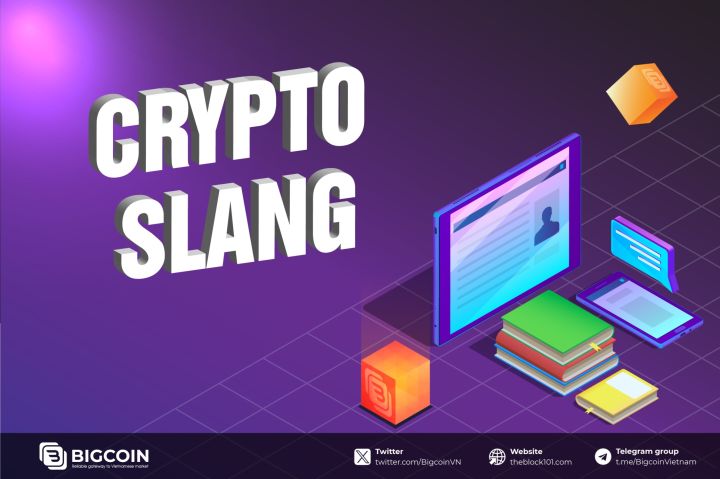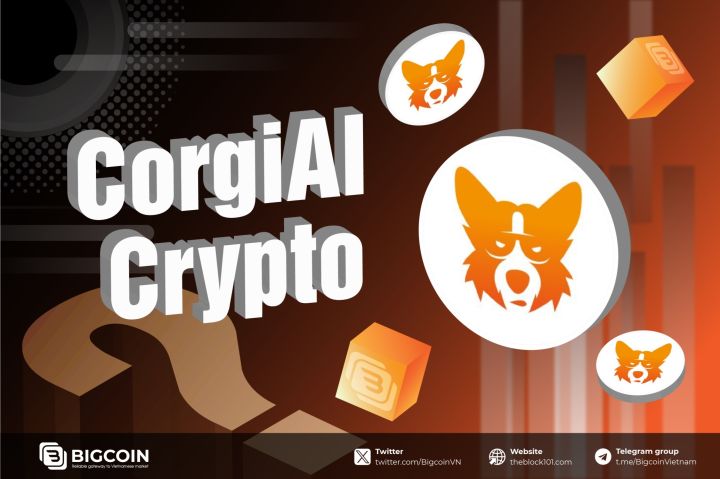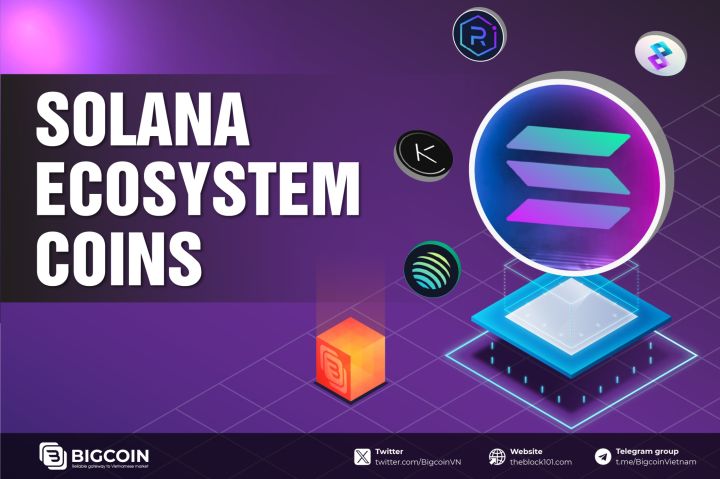1. What makes Bitcoin L2 special?
Currently, the Total Value Locked (TVL) in Bitcoin Layer 2 (L2) projects constitutes a small fraction of the over $500 billion Bitcoin market. The TVL of the four most notable Bitcoin L2 projects amounts to approximately $352.65 million, representing only about 0.06% of the overall L2 market. This indicates that Bitcoin L2 is still in its early developmental stages. A comparison with the L2 market on other chains further highlights this point. According to Binance's 2022 report, L2 projects on Ethereum have captured over 10% of the market.
The relatively small TVL of Bitcoin L2s also suggests that they have not yet garnered significant attention from the community. Since Bitcoin's base layer lacks smart contract tools and Turing-complete capabilities like the Ethereum Virtual Machine (EVM), Bitcoin L2 projects need to incorporate similar programming functionalities into the network. If users become more interested in Bitcoin use cases beyond simple peer-to-peer transactions, they might engage more with and add value to Bitcoin L2 projects. However, this shift has not yet occurred.
.png)
Despite this, foundational projects are making progress. The Lightning Network is steadily advancing, and Stacks is undergoing significant upgrades to support the development of the smart contract market on Bitcoin. Rootstock has also been upgraded, and the addition of the Rollkit protocol is a notable enhancement.
Existing L2 solutions on Bitcoin serve various purposes, aiming to expand the network and enhance programming capabilities. In the following section, we will explore some of the most noteworthy L2 projects on Bitcoin.
2. Outstanding Layer 2 projects
2.1. Lightning Network
Bitcoin has been optimized to prioritize decentralization and security, which has resulted in limitations on scalability. Consequently, compared to other Layer 1 (L1) networks such as Ethereum or BNB, Bitcoin typically experiences slower throughput and higher transaction fees. To maintain its dominance in an increasingly competitive L1 landscape and fulfill Satoshi's vision of a practical payment system, Bitcoin needs to enhance its scalability.
The Lightning Network, proposed in 2016 by Joseph Poon and Tadge Dryja, addresses Bitcoin's scalability challenges. The Lightning Network utilizes "payment channels," which are essentially multi-signature smart contracts that facilitate transactions between two users. By using these payment channels, users can conduct transactions off the Bitcoin blockchain (off-chain). This approach enables high throughput and low transaction fees, as users do not need to compete for block space or wait for Layer 1 consensus to execute transactions.
.png)
When users complete transactions through a Lightning Network payment channel, they can choose to close the channel. Subsequently, a summary transaction is created to encapsulate the off-chain activity, which is then settled on-chain using the Bitcoin network. This mechanism allows the Lightning Network to inherit Bitcoin's security while reducing transaction fees and avoiding throughput limitations.
Thanks to this unique design, the Lightning Network theoretically has the capacity to handle over 40 million transactions per second, far exceeding other blockchains and traditional payment systems.
Moreover, the Lightning Network significantly reduces transaction fees. Nodes within the Lightning Network route payment channel transactions and charge two types of fees: a base fee and a proportional fee. Currently, the base fee for conducting a transaction through a payment channel averages around $0.000000572 USD. The proportional fee for sending a specific amount of BTC through a payment channel is also minimal, averaging $0.000000005735 USD per satoshi. Both types of fees continue to decrease as the use of the Lightning Network grows and competition among node operators increases.
The scalability potential of the Lightning Network has been widely recognized. With the surge in Bitcoin usage since 2016, many users have turned to the Lightning Network to reduce fees and efficiently conduct transactions on Bitcoin. Consequently, the use of the Lightning Network has been steadily increasing. The number of nodes and payment channels on the Lightning Network has grown over the past few years.
The adoption of the Lightning Network has been driven by national and enterprise-level integrations. For instance, following El Salvador's official adoption of Bitcoin in 2021, the Lightning Network received public endorsement from the government and eventually became a compatible payment method with the government-authorized Chivo Wallet. At the enterprise level, both Twitter and Cash App have added Lightning Network compatibility to their platforms.
.png)
The future outlook for the Lightning Network is promising, with numerous projects and investors working to build this Layer 2 network. For example, Jack Dorsey's Bitcoin-focused startup Block recently launched a new venture called "c=", which focuses on providing new capital tools and services on the Lightning Network. This is a significant expansion of the capital Block has already invested in Spiral, an open-source project by developers working on a new version of the Lightning Network.
Spiral is developing a version called the Lightning Developer Kit (LDK) to improve the user experience of the Lightning Network, particularly for everyday users. Currently, setting up a Lightning node and sending payments on the network is challenging. Recipients also need to be online and have their Lightning wallets open. The deployment of LDK will address these issues and offer various improvements to enhance the usability of the payment system.
Additionally, Lightning Labs, the main development team behind the Lightning Network, is working on releasing an update called "Taro." Taro, which stands for "Taproot-based Asset Representative Layer," leverages Bitcoin's Taproot upgrade to create new assets for Bitcoin. Specifically, Taro will use the Lightning Network, Bitcoin's UTXO model, and Taproot to establish a network for transferring assets other than BTC. Ultimately, Taro will enable users to issue and transfer synthetic assets, tokens, and NFTs on the Bitcoin platform.
Furthermore, companies like Zeebeedee and Strike are partnering with various countries to provide the infrastructure to onboard new users to the Lightning Network. For instance, Zeebeedee recently launched an in-app payment feature, allowing users to send any amount of money to five jurisdictions, including Nigeria and Brazil. The company has expanded its operations into El Salvador and other Central American countries and is now extending its international remittance services running on Bitcoin's Lightning Network to one of the world's largest remittance markets in the Philippines.
2.2. Stacks
Stacks positions itself as the "Bitcoin Layer." However, Stacks is neither a sidechain nor a traditional Layer 2. Simply put, Stacks is a blockchain that functions as a secondary layer to enable smart contracts for Bitcoin. The Stacks blockchain uses the STX token to incentivize miners and pay transaction fees, operating on a novel consensus mechanism called "Proof of Transfer" (PoX). Through PoX, Stacks blockchain transactions are settled on Bitcoin's Layer 1, allowing Stacks transactions to benefit from Bitcoin's security. Additionally, STX tokens can be "stacked" to earn BTC yields.
Developers can build various decentralized applications (dApps) on the Stacks chain, with a focus on DeFi and NFTs. Stacks employs the Clarity programming language for its smart contracts, designed to mitigate common security risks associated with Solidity, such as reentrancy attacks. Since the mainnet launch in January 2021, numerous projects have been developed or deployed on the Stacks chain, including the Bitcoin Name Service (BNS), which has gained significant attention and development progress this year.
.png)
Potential of Stacks
sBTC
- Stable Peg Model: sBTC introduces a stable peg model that allows users to convert BTC from Layer 1 into sBTC on the Stacks layer at a 1:1 ratio. Users can send BTC to a multi-signature wallet on Layer 1, controlled by a decentralized group of "stackers" who have locked STX to secure the Stacks chain, and mint an equivalent amount of sBTC on the Stacks layer. This sBTC can then be used for DeFi, NFTs, and various other applications.
- Unlocking Bitcoin Capital: Stacks views sBTC as the "final piece" in their vision of a Bitcoin execution layer, aiming to unlock over $500 billion in Bitcoin capital with this solution.
- Smart Contract Access: sBTC will have full access to Layer 2 smart contracts, potentially elevating Stacks' DeFi and NFT use cases to new heights.
Nakamoto Release
- Enabling sBTC: The upcoming Nakamoto upgrade to the Stacks chain will enable sBTC.
- Enhanced Security: Post-release, Stacks will utilize 100% Bitcoin security to ensure finality on the Stacks layer. This means that to reorganize blocks or transactions on Stacks, an attacker would need to reorganize Bitcoin Layer 1. Given Bitcoin's status as the most decentralized cryptocurrency, this would be highly challenging, thus providing significant additional security to Stacks as a Bitcoin layer. While there is no official release date, these features are expected to be implemented as early as the second half of 2023.
In recent weeks, Stacks has garnered considerable interest due to discussions about Ordinals and their relevance to Bitcoin use cases. The Stacks teams have effectively leveraged this interest, with co-founder Muneeb Ali leading recent cryptocurrency podcasts. Investors are also preparing for Stacks' future upgrades, focusing on sBTC and its potential benefits for the cryptocurrency market.
.png)
2.3. Rootstock
Rootstock (RSK) operates as a secondary chain compatible with the Ethereum Virtual Machine (EVM) for executing Bitcoin-based smart contracts. RSK employs a unique form of consensus known as "DECOR+," allowing it to operate alongside Bitcoin, with about 40-50% of Bitcoin miners historically engaging in RSK mining activities.
The native currency of RSK is Smart Bitcoin (RBTC), utilized for transaction fees and pegged to Bitcoin at a fixed ratio of 1:1, with a total supply mirroring that of Bitcoin. The connection between Bitcoin's Layer 1 and RBTC is facilitated through a mechanism called "Powpeg," which enables the two-way conversion of BTC between the two chains. Initially managed by a consortium, the administration of Powpeg has gradually centralized, albeit requiring a level of trustworthiness from online signatories for peg-out requests.
.png)
The RSK Virtual Machine (RVM) ensures compatibility with the Ethereum Virtual Machine, allowing smart contracts to be written in Solidity. A prominent project on RSK is Sovryn, which offers non-custodial smart contract functionalities for lending, borrowing, and margin trading using Bitcoin. An important recent development on RSK was the removal of the 4,000 RBTC cap, expanding the total supply to a maximum of 21 million, thereby enhancing its utility in Bitcoin DeFi applications.
Comparing Stacks' sBTC with RSK's RBTC:
- While sBTC has yet to be launched, the main distinction between the two lies in their decentralization approach. Stacks' sBTC peg mechanism is decentralized, relying on economic incentives rather than predefined groups, akin to a collateral bridge. Conversely, RSK's RBTC solution, while reducing reliance on consortia, still requires a degree of trust, akin to a consortium bridge.
- Additionally, the choice of programming language differs between the two platforms. Smart contracts on RSK are coded in Solidity, a widely-used language across Ethereum and other leading platforms, potentially attracting more developers compared to Stacks' Clarity-based sBTC contracts.
2.4. Liquid Network
The Liquid Network operates as a secondary layer, or sidechain, built on top of the Bitcoin blockchain. Its purpose is to facilitate faster and more efficient transactions of digital assets, such as stablecoins and security tokens, while leveraging the security of the Bitcoin network. Unlike other Layer 2 solutions, the Liquid Network is managed by a select group of 60 members who validate transactions and maintain the network's integrity. This centralized approach ensures robust security measures.
One key feature of the Liquid Network is its native token, called "L-BTC," which is pegged at a 1:1 ratio with Bitcoin. This token enables users to conduct transactions within the Liquid Network at a higher speed and throughput compared to the main Bitcoin chain. Additionally, L-BTC can be utilized for various purposes within the Liquid Network ecosystem, such as lending and acquiring security tokens.
Overall, the Liquid Network offers a streamlined and secure platform for conducting digital asset transactions, enhancing the efficiency and scalability of the Bitcoin network.
2.5. Rollkit
Rollkit, developed by the Celestia team, functions as a modular framework designed for Bitcoin rollups. In many contemporary Layer 1 (L1) chains, such as Bitcoin, both data and execution processes are integrated within the same consensus layer, forming a singular blockchain. However, Rollkit diverges from this model by segregating consensus and Bitcoin data from the execution process, thereby establishing a modular framework.
.png)
This framework, along with Rollkit's node software, facilitates the implementation of a fully functional Turing-complete execution layer on Bitcoin for developers of Bitcoin Layer 2 (L2) solutions. Simultaneously, it enables seamless interaction with the existing Bitcoin data layer in a secure manner.
Rollkit empowers the deployment of "sovereign rollups," which utilize Bitcoin as the consensus and data layer to provide Bitcoin-like security for rollup transactions. Subsequently, it furnishes an environment for executing complex Bitcoin transactions, encompassing areas such as decentralized finance (DeFi), non-fungible tokens (NFTs), and infrastructure projects. These transactions are encapsulated and transmitted to the Bitcoin L1 for inclusion in the Bitcoin ledger. Rollkit also leverages enhancements like Taproot and Segwit, akin to Ordinals and Inscriptions. Furthermore, the execution environment can be customized and may even support an Ethereum Virtual Machine (EVM) network on the Bitcoin network. Sovereign rollups can be initiated effortlessly without the necessity for separate consensus or validation mechanisms. This characteristic positions Rollkit as "sovereign rollups - owner-operated aggregates," rooted in the "ownership" of Bitcoin L1, while concurrently extending and refining programming capabilities.
Despite Rollkit's recent introduction to the Bitcoin L2 ecosystem, garnering attention since its February announcement, it has sparked interest. Renowned Bitcoin thought leader Eric Wall, for instance, shared his perspective on Rollkit and its potential, underscoring its remarkable nature. Wall emphasized the capability of Rollkit to leverage the same storage space utilized by Ordinal Inscriptions for placing rollups on Bitcoin, thereby enabling every execution environment to operate, ensuring consistent data availability, and block ordering akin to Bitcoin.
An intriguing prospect lies in the potential integration between Stacks' sBTC and Rollkit. The latter provides a platform for developers to construct smart contracts at the execution level for Bitcoin, necessitating a means to convert BTC from L1 to L2. Leveraging sBTC as a conversion intermediary presents a plausible solution, minimizing dependence on transferring BTC from L1 to another rollup layer. For instance, users could transition BTC from L1 to the Rollkit rollup for DeFi applications, subsequently reverting using sBTC as the conversion medium.
2.6. BEVM
BEVM, or Bitcoin Enhanced Virtual Machine, is a Layer 2 solution designed for Bitcoin (BTC) that utilizes BTC as gas fees and is compatible with the Ethereum Virtual Machine (EVM). It aims to streamline operations and expand the capabilities of the Bitcoin network by incorporating technologies from Ethereum.
.png)
The key objectives of BEVM include BTC EVM, BTC to VM, and BEVM Stack.
BTC EVM: This aspect of BEVM focuses on creating a decentralized BTC Layer 2 system that works seamlessly with the Ethereum Virtual Machine (EVM). It enables the smooth deployment of various applications from the Ethereum ecosystem on the BEVM platform, thereby increasing Bitcoin's usage and facilitating diverse user scenarios.
BTC to VM: BEVM aims to develop a decentralized Bitcoin Forex Protocol, allowing Bitcoin to be introduced into any chain and ecosystem. This trading system enhances the credibility of Bitcoin across different public chains.
BEVM Stack: BEVM Stack represents an advanced and highly customizable blockchain technology architecture intended for future deployment. It offers developers an efficient and cost-effective way to implement Layer 2 solutions for Bitcoin on the BEVM platform.
2.7. MAP Protocol
MAP Protocol is a second-layer solution designed to enhance the capabilities of the Bitcoin network by enabling cross-chain interoperability with other blockchain networks. It operates on a peer-to-peer infrastructure and leverages lightweight clients and zero-knowledge technology.
In the current landscape of numerous blockchains, the ability to communicate seamlessly across different chains is crucial. MAP Protocol aims to facilitate this cross-chain interoperability for Bitcoin, without relying on any intermediary parties. Instead, it relies on direct peer-to-peer communication.
The protocol provides a versatile platform for the development of decentralized applications (dApps) that can operate across multiple blockchains. It achieves this by offering an omnichain smart contract development environment.
MAP Protocol offers several notable advantages:
-
Wide Applicability: It supports the creation of decentralized applications (dApps) that can function across various blockchain networks, allowing them to benefit from the unique features of each chain.
-
Efficient Cross-Chain Communication: MAP Protocol employs a cross-chain communication mechanism called Messenger, which securely transmits information and assets between different chains.
-
Security and Privacy: The protocol prioritizes user security and privacy by implementing measures to verify the authenticity of cross-chain transactions and employing encryption techniques to safeguard sensitive data.
-
Flexibility and Scalability: MAP Protocol is designed to be flexible and scalable, allowing smart contracts and protocol components to be tailored and expanded according to the specific requirements of different applications.
-
Easy Integration: MAP Protocol provides an open Messenger SDK, enabling developers to seamlessly integrate the protocol into their applications, thus simplifying the development and deployment process for decentralized applications on the platform.
2.8. B² (Bsquared) Network
The B² Network constitutes a Layer-2 initiative tailored for Bitcoin, with the primary aim of tackling Bitcoin's scalability limitations while upholding its security standards.
By leveraging rollup technology and zero-knowledge proofs, the B² Network establishes a platform capable of executing Turing-complete smart contracts for off-chain transactions. This strategy enhances transaction throughput and diminishes associated costs.
.png)
Comprising two core layers, namely the Rollup Layer and the Data Availability Layer, the B² Network's architecture is structured as follows:
-
Rollup Layer: Serving as the central component, the Rollup Layer processes off-chain transactions. It employs rollup technology to consolidate multiple transactions into a generalized form, which subsequently requires validation solely on the primary Bitcoin chain. This consolidation minimizes the necessity for individual transaction validations on the main chain, thereby enhancing operational efficiency and reducing expenses.
-
Data Availability Layer: Operating as a secondary layer, the Data Availability Layer stores transaction-related data originating from the Rollup Layer. This dataset includes comprehensive transaction details such as amounts, source and destination addresses, and other pertinent information.
Furthermore, the project has garnered notable attention for successfully securing seed funding from prominent entities like Hashkey, OKX, IDG, Kucoin, ABCDE, Waterdrip, and Antalpha, among others.
2.9. Babylon
Babylon operates as a blockchain platform within the larger Cosmos ecosystem, designed to facilitate staking activities for Bitcoin on various Proof of Stake (PoS) blockchains without necessitating intermediary mechanisms like bridges or wrapped assets.
Key Components of Babylon:
-
Bitcoin Staking Protocol: This protocol enables users to engage in staking Bitcoin directly on PoS blockchains, allowing them to earn rewards without the need to convert their Bitcoin holdings into other forms like wrapped or custodial assets.
-
Bitcoin Timestamping Protocol: Central to Babylon's architecture, this protocol utilizes the security features of Bitcoin to provide timestamping services for other blockchains. It ensures that timestamps from external blockchains are securely recorded on the Bitcoin blockchain, offering benefits such as fast staking withdrawals, seamless integration, and enhanced security.
-
Bitcoin Data Availability Protocol: This protocol leverages the limited block space on the Bitcoin blockchain to support essential functions, such as providing censorship-resistant layers for PoS blockchains. By extending Bitcoin's security features to PoS blockchains, this protocol contributes to the creation of a robust and efficient ecosystem.
Investment and Funding: Babylon has attracted $18 million in investment from various entities, including Hack VC, Polychain Capital, Framework, OKX Ventures, Castle Island Ventures, and Chainfund Capital. Additionally, there has been another funding round, the details of which have not been publicly disclosed.
2.10. Microvision Chain
The Microvision Chain (MVC) is a blockchain aspiring to serve as a primary sidechain companion to Bitcoin. Operating on the UTXO & POW model, MVC combines efficiency, effectiveness, and cost-saving measures. Its primary objective is to establish a public Proof of Work (POW) blockchain with considerable scalability, acting as a secondary layer to Bitcoin, thus enhancing operational efficiency and decreasing expenses. The protocol concentrates on three key enhancements:
- Implementation of smart contracts based on UTXO accounts, facilitating application development.
- Deployment of a decentralized identity protocol with integrated cross-chain support, where all chain data is linked to a single ID.
- To attract new users, there is no prerequisite to purchase or possess cryptocurrencies for utilizing Web3 applications.
2.11. SatoshiVM
SatoshiVM functions as a Layer 2 solution for Bitcoin known as ZK Rollup, designed to enhance scalability and interoperability with the Ethereum Virtual Machine (EVM) ecosystem. It leverages BTC as the original currency for transaction fees. SatoshiVM facilitates seamless integration between the Bitcoin and Ethereum ecosystems, enabling Bitcoin to issue assets and foster application development.
Core technological aspects of SatoshiVM include:
-
ZK EVM: SatoshiVM employs a flexible ZK Rollup framework that utilizes the Ethereum Virtual Machine (EVM) for executing off-chain computations. This allows users to interact with SatoshiVM similarly to Ethereum, while developers can build applications on the SatoshiVM platform akin to Ethereum.
-
ZK Rollup: Using Rollup technology, SatoshiVM consolidates multiple transactions into a single batch and validates them on the main Bitcoin network as a single transaction. This ensures robust security and data integrity, similar to the Bitcoin main network.
-
ZK Fraud Proofs: SatoshiVM utilizes technologies such as Taproot and Bitcoin Script to verify contracts on the blockchain without altering the Bitcoin network's consensus rules, thereby enabling fraud-proof calculations.
-
Data Accessibility: SatoshiVM ensures transparency by publishing transaction data on the main Bitcoin network, allowing anyone to verify the accuracy of off-chain computations.
-
BTC Native Gas: SatoshiVM utilizes original BTC as gas fees for transactions on the Ethereum Virtual Machine (EVM). This approach mirrors the use of ETH as gas fees in Layer 2 solutions for Ethereum, ensuring seamless compatibility with Bitcoin transaction.
3. Conclusion
In the Ethereum world, "Bitcoin L2" differs from its meaning in the Bitcoin ecosystem. While projects like Liquid claim to be "L2," they function more like federated sidechains, relying on federations for block signing and wallet management. This contrasts with a "true L2," where users can withdraw assets from L2 back to L1 without depending on L2.
None of the solutions mentioned in the article qualify as a "true L2." Stacks, RSK, Liquid, and Rollkit all require some form of centralized control or bridge for asset transfers between L1 and L2 due to Bitcoin's limitations in supporting asset verification across layers. Achieving a "true L2" would require opcode support from Bitcoin, but implementing this could take many years. Muneeb Ali, co-founder of Stacks, has stated they won't rely on Bitcoin L1 support during development.
Readmore:

 English
English Tiếng Việt
Tiếng Việt
%20(21).png)
%20(20).png)
%20(19).png)
%20(18).png)
%20(17).png)
%20(16).png)
%20(15).png)
%20(11).png)
.png)
%20(2).png)
%20(3).png)
%20(5).png)




